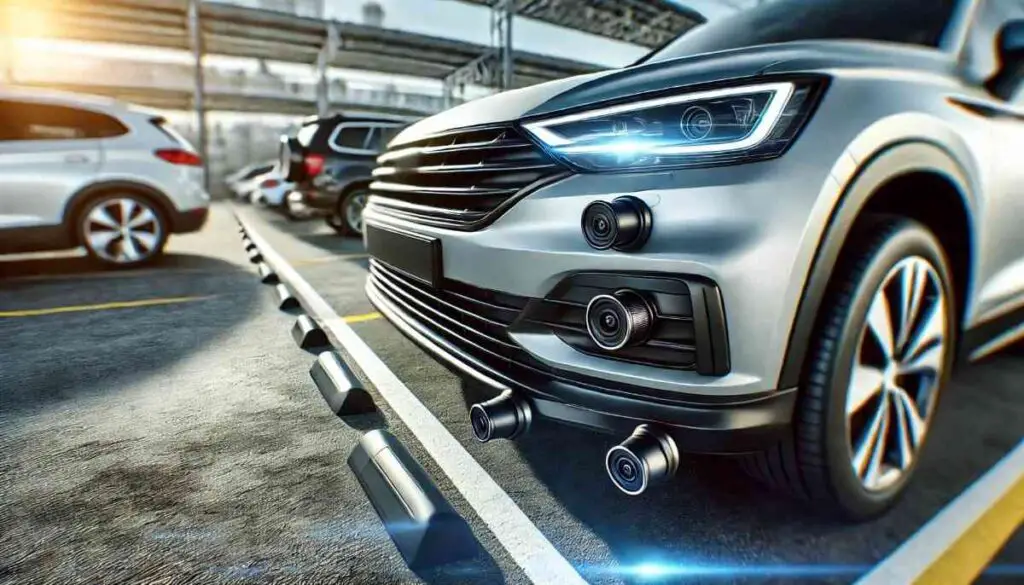1. Introduction
Black Friday is a pivotal moment for car audio enthusiasts and bargain hunters alike. This guide dives into the heart of Black Friday deals, spotlighting the most sought-after discounts in the car audio market. From state-of-the-art stereos to powerful subwoofers, we cover the spectrum of deals that will transform your driving experience.
2. Why Upgrade Your Car Audio System?
Upgrading your car audio system isn’t just about louder music; it’s about enriching your driving experience. Modern car audio systems offer crystal clear sound, seamless connectivity, and features that were unimaginable just a few years ago. Embrace the evolution of sound with our curated list of the best car audio technology.
4. Unparalleled Discounts on Car Speakers
This Black Friday opens up a world of opportunities for audiophiles and casual listeners alike with unbeatable discounts on car speakers. The market is brimming with options from esteemed brands, each offering a unique listening experience. Whether you’re seeking an upgrade or a complete overhaul of your car’s audio system, understanding the differences between speaker types is key to making the right choice.
Types of Car Speakers and Their Unique Features
- Coaxial Speakers (Full-Range Speakers): These are the most common and budget-friendly option. Coaxial speakers integrate multiple speaker components, such as woofers and tweeters, into a single unit. This design simplifies installation and is ideal for those who want a straightforward upgrade from factory speakers.
- Component Speakers: For the audiophile who craves superior sound quality, component speakers are the way to go. These systems separate the tweeter and the woofer, allowing for more flexible placement and better soundstage. The result is a more immersive and dynamic audio experience.
- Subwoofers: Specifically designed to handle low-frequency sounds, subwoofers are essential for those who love deep bass. They add richness and depth to music, making them a popular choice for genres like hip-hop, EDM, and rock.
- Mid-Range and Tweeters: These specialized speakers handle specific parts of the sound spectrum. Mid-range speakers are adept at reproducing the ‘middle’ frequencies, crucial for vocals and many instruments. Tweeters, on the other hand, take care of the high frequencies, adding clarity and sparkle to the music.
How to Choose the Right Speakers for Your Vehicle
- Consider Your Music Preferences: Your choice of speakers can greatly affect how your favorite tunes sound in your car. Bass-heavy music genres may benefit from powerful subwoofers, while a balanced set of component speakers might better suit a wide range of musical styles.
- Evaluate Your Car’s Acoustics: The size and shape of your vehicle’s interior can influence sound quality. Larger cars might require more powerful speakers to fill the space with sound, while smaller vehicles might benefit from a more compact and efficient setup.
- Compatibility with Existing System: Ensure the speakers you choose are compatible with your car stereo and other audio components. Consider factors like power handling, sensitivity, and impedance to achieve the best sound quality and prevent damage to your audio system.
Spotting the Best Deals
This Black Friday, be on the lookout for promotions on top brands like JBL, Sony, and Bose. These brands are known for their quality construction, exceptional sound, and innovative features. Deals may include discounts on individual speakers or bundled packages, offering a cost-effective way to elevate your car’s audio system.
In conclusion, upgrading your car speakers can transform your driving experience, providing you with crystal-clear sound and powerful bass. Our guide to Black Friday car speaker deals is your ticket to making an informed choice that resonates with your personal preferences and enhances your daily commute.
6. Amplifiers: Power Up Your Sound System
Amplifiers play a crucial role in any high-quality car audio system. They are not just about boosting volume; they are about enriching the overall sound quality. This Black Friday, outstanding deals on amplifiers present an opportunity to elevate your car’s audio system significantly. Our comprehensive guide focuses on understanding the key specifications of amplifiers and how to choose one that perfectly complements your audio setup.
Understanding Amplifier Specifications
- Wattage: This indicates the power output of an amplifier. Higher wattage equates to more power, but it’s essential to match the amplifier’s power output with your speakers’ handling capacity to avoid damage.
- Channels: Amplifiers come in various channel configurations, including mono, 2-channel, 4-channel, and even 6-channel options. Mono amplifiers are ideal for powering subwoofers, while multi-channel amps are perfect for running multiple speakers and subwoofers.
- Compatibility: Ensure the amplifier is compatible with your car’s electrical system and audio components. This includes impedance (measured in ohms) and the type of inputs the amplifier accepts.
Key Features to Consider in Car Amplifiers
- Class of Amplifier: Amplifiers are categorized into different classes (A, B, AB, D) based on their operating characteristics and efficiency. Class D amplifiers, for example, are known for their efficiency and are ideal for powering subwoofers.
- Built-in Crossovers: Many modern amplifiers come with built-in crossovers, which are crucial for directing specific frequencies to the appropriate speakers. This feature is vital for fine-tuning your audio system for optimal performance.
- Size and Installation Flexibility: The physical size of the amplifier is an important consideration, especially in vehicles where space is at a premium. Look for compact designs if space is a constraint.
Finding the Best Black Friday Deals
When scouting for Black Friday deals, pay attention to offers from established brands like JL Audio, Pioneer, and Kenwood. These brands are celebrated for their reliability, sound quality, and advanced features. Look for promotions that might include significant price reductions, bundle deals, or extra warranty periods.
Conclusion
An amplifier is more than just a power boost for your car’s audio system; it’s a vital component that shapes the sound quality. With Black Friday deals, you have the opportunity to acquire a high-quality amplifier at a fraction of the cost. By understanding the key specifications and features, you can make an informed choice that will power up your sound system and transform your in-car audio experience.
15. Legal Considerations and Safety in Upgrading Car Audio
Upgrading your car audio system is an exciting venture, but it’s essential to be aware of legal considerations and safety measures to ensure a trouble-free and secure experience on the road. Here, we delve into the crucial aspects of regulatory compliance and safety that you should keep in mind when enhancing your car’s audio capabilities.
Regulatory Compliance
- Noise Regulations: Many regions have strict regulations regarding the volume and type of sounds emitted from vehicles. Ensure that your upgraded audio system complies with local noise ordinances to avoid potential fines or legal issues.
- Amplifier Wattage: Some areas restrict the maximum power output of amplifiers in vehicles. Be aware of these limits and choose an amplifier that adheres to the regulations in your jurisdiction.
- Tinted Windows: Upgrading to powerful subwoofers can generate vibrations that may affect your car’s windows. Check local laws on window tinting and ensure your audio upgrades don’t lead to non-compliance.
Safety Measures
- Installation Safety: Whether you’re performing a DIY installation or relying on a professional, safety should be a top priority. Disconnect the car battery before any work begins to prevent electrical accidents. If hiring a professional, ensure they are experienced and licensed.
- Secure Mounting: Ensure that all components, including speakers and amplifiers, are securely mounted. Loose or improperly secured equipment can become hazardous in the event of sudden stops or accidents.
- Wiring and Fire Hazards: Use appropriate wiring and insulation to prevent electrical shorts and fire hazards. Make sure all wiring is properly routed and protected from sharp edges or moving parts in your vehicle.
- Ventilation: High-power amplifiers and subwoofers can generate heat. Proper ventilation is crucial to prevent overheating, which can lead to damage or even fires. Follow manufacturer recommendations for installation and ventilation.
- Distracted Driving: While enjoying your upgraded audio system, avoid distractions that can compromise road safety. Use controls like volume adjustment and track selection responsibly, and never manipulate audio settings while driving.
Conclusion
Upgrading your car audio system can greatly enhance your driving experience, but it’s vital to do so while adhering to legal regulations and safety guidelines. Ensuring that your audio upgrades comply with local noise regulations and following safety measures during installation will help you enjoy your car audio system responsibly and without legal issues or safety concerns. Always prioritize safety on the road.
16. Maximizing Audio Quality: Beyond Equipment
While investing in high-quality audio equipment is essential for an impressive car audio experience, optimizing your audio files and settings can take your listening enjoyment to the next level. Here are tips on how to maximize audio quality in your car audio system:
Choose the Right Audio File Formats
- Lossless Formats: Whenever possible, opt for lossless audio file formats like FLAC (Free Lossless Audio Codec) or ALAC (Apple Lossless Audio Codec). These formats preserve the full quality of the original recording without compression, resulting in the best audio fidelity.
- High Bitrate MP3s: If storage space is a concern, select high bitrate MP3 files (e.g., 320 kbps) or AAC (Advanced Audio Coding) files. While they are compressed, they offer good audio quality and are suitable for most listeners.
- Avoid Low-Quality Formats: Steer clear of low-quality audio formats like highly compressed MP3s (e.g., 128 kbps) or formats with heavy compression artifacts. These formats sacrifice audio quality for smaller file sizes.
Organize Your Music Library
- Metadata Cleanup: Ensure that your music files have accurate and complete metadata, including artist, album, and track information. Organized metadata makes it easier to navigate and enjoy your music collection.
- Folder Structure: Create a logical folder structure for your music library. Organizing your music into folders by artist, album, or genre can simplify access and improve your overall listening experience.
Audio Settings and Equalization
- Flat EQ: Start with a flat or neutral equalizer setting, which ensures that no frequencies are boosted or attenuated. From this baseline, you can adjust the equalizer to your preferences and the acoustics of your car’s interior.
- Room Correction: Some advanced car audio systems offer room correction features. Use these systems to measure and adjust audio settings based on the acoustics of your car’s interior.
Streaming Services
- High-Quality Streams: If you use streaming services like Spotify or Apple Music, select high-quality streaming options when available. Many services offer “High Quality” or “Lossless” settings that deliver better sound quality.
- Offline Downloads: When streaming in the car, consider downloading your favorite tracks or playlists for offline listening. This eliminates potential streaming quality issues caused by poor network connections.
Soundproofing and Acoustic Improvements
- Soundproofing: Consider soundproofing your car’s interior to reduce external noise and improve the overall listening experience. Focus on areas like doors, floors, and the trunk.
- Speaker Placement: If you’re customizing your car audio system, pay attention to speaker placement. Proper placement can significantly impact sound quality and imaging.
Conclusion
By selecting the right audio file formats, organizing your music library, optimizing audio settings, and considering soundproofing and speaker placement, you can maximize the audio quality of your car audio system. These steps go beyond the equipment itself and help ensure that you enjoy the full potential of your high-quality car audio setup.
17. Budgeting for Your Car Audio Upgrade
Embarking on a car audio upgrade journey is exciting, but it’s essential to plan your budget wisely to get the best value for your investment. Here are some financial planning tips to help you allocate your resources effectively without breaking the bank:
1. Define Your Budget
- Start by determining how much you’re willing to allocate for your car audio upgrade. Establishing a clear budget will guide your decisions and prevent overspending.
2. Prioritize Essentials
- Identify the essential components you need for your upgrade. This typically includes speakers, amplifiers, and a head unit. Allocate a significant portion of your budget to these core components.
3. Set Realistic Goals
- Be realistic about what you can achieve with your budget. High-end audio equipment can be expensive, so prioritize quality over quantity. It’s better to invest in a few top-notch components than to spread your budget too thin.
4. Research and Compare Prices
- Take the time to research different brands and models of audio equipment. Compare prices from various retailers and online stores to find the best deals and discounts.
5. Consider Used or Refurbished Equipment
- Don’t overlook the option of purchasing used or refurbished audio equipment. You can often find high-quality components at a fraction of the cost of new ones. Just ensure that the equipment is in good working condition and has a warranty if possible.
6. DIY vs. Professional Installation
- Consider whether you’ll be performing the installation yourself or hiring a professional. DIY installation can save money, but it requires technical know-how. If you opt for professional installation, budget for labor costs.
7. Plan for Wiring and Accessories
- Factor in the cost of wiring, connectors, and accessories needed for the installation. These items can add up, so include them in your budget calculations.
8. Future Upgradability
- Think about the potential for future upgrades. If you’re on a tight budget now, investing in a system that allows for future expansion can be a smart move. You can add more components as your budget permits.
9. Don’t Forget Soundproofing and Acoustics
- If you have room in your budget, consider soundproofing materials and acoustic treatments for your car’s interior. These enhancements can significantly improve audio quality.
10. Allocate for Miscellaneous Expenses
- Leave a portion of your budget for unexpected expenses or contingencies. It’s always a good idea to have some financial flexibility.
11. Finalize Your Budget
- After considering all these factors, finalize your budget with a clear breakdown of how much you’ll spend on each component and installation.
Conclusion
Budgeting for your car audio upgrade is a crucial step to ensure you get the best value for your investment. By defining your budget, prioritizing essentials, researching prices, and considering options like used equipment or DIY installation, you can enjoy an enhanced audio experience without straining your finances. Remember that quality and planning go hand in hand when optimizing your car’s audio system.
18. Warranty and Support: What to Know
When investing in a car audio system upgrade, it’s essential to understand the nuances of warranties and customer support options. This knowledge can safeguard your investment and provide peace of mind. Here’s what you need to know:
1. Manufacturer’s Warranty
- Most car audio equipment comes with a manufacturer’s warranty. This warranty typically covers defects in materials and workmanship for a specific period, often ranging from one to three years. It’s crucial to read and understand the terms and conditions of the manufacturer’s warranty.
2. Extended Warranties
- Some retailers offer extended warranties for car audio equipment. These extended warranties can provide additional coverage beyond the manufacturer’s warranty. Evaluate whether the extended warranty offers value for your specific equipment.
3. Warranty Coverage
- Pay attention to what the warranty covers. It should include repairs or replacements of faulty components. Ensure that the warranty explicitly covers the specific equipment you’re purchasing, such as speakers, amplifiers, and head units.
4. Warranty Registration
- Many manufacturers require you to register your product to activate the warranty. Make sure to complete this step promptly after purchase to ensure your coverage is valid.
5. Installation by Professionals
- If you’re having your car audio system professionally installed, inquire about the impact on your warranty. Some manufacturers may require professional installation to maintain warranty coverage.
6. Customer Support
- Research the reputation of the manufacturer’s customer support. Read reviews and check if they are known for responsive and helpful customer service. Quick and effective support can be invaluable if you encounter issues.
7. Return and Exchange Policies
- Familiarize yourself with the return and exchange policies of the retailer where you purchase your car audio equipment. These policies can vary, and understanding them can be crucial if you need to make returns or exchanges.
8. Keep Documentation
- Retain all documentation related to your car audio purchase, including receipts, invoices, warranty cards, and product manuals. Having these documents on hand can expedite warranty claims and customer support interactions.
9. Professional Installation
- If you opt for professional installation, keep records of the installation, including the installer’s contact information and any agreements regarding the installation process.
10. Regular Maintenance
- To maintain warranty coverage, follow recommended maintenance procedures outlined in the product manuals. Neglecting maintenance or using the equipment in a manner not intended by the manufacturer may void the warranty.
Conclusion
Understanding the warranty and support options for your car audio equipment is crucial to protect your investment. Familiarize yourself with warranty coverage, registration requirements, and customer support reputation. Additionally, keep all relevant documentation and consider professional installation if required. By taking these steps, you can ensure that your car audio system remains covered and supported throughout its lifespan.
19. Frequently Asked Questions
When it comes to car audio deals and upgrades, many enthusiasts have common questions and queries. To provide you with a comprehensive resource, we’ve compiled the most frequently asked questions along with detailed answers:
Q1: What are the essential components of a car audio system?
A1: The core components of a car audio system include the head unit (stereo or receiver), speakers, amplifiers, and sometimes a subwoofer. These components work together to deliver high-quality sound in your vehicle.
Q2: How can I find the best car audio deals on Black Friday?
A2: To find the best Black Friday car audio deals, start by researching online and checking out major retailers’ websites. Sign up for newsletters to receive early notifications. Additionally, consider visiting local car audio stores for in-person deals.
Q3: Are refurbished car audio components a good option?
A3: Refurbished car audio components can be a cost-effective choice if you buy from a reputable source. Ensure they come with a warranty and have been certified by the manufacturer or a trusted refurbishing company.
Q4: What’s the difference between coaxial and component speakers?
A4: Coaxial speakers combine multiple speaker elements (e.g., tweeters and woofers) into a single unit, making them easier to install. Component speakers separate these elements, offering better sound quality and customization but requiring more installation effort.
Q5: What’s the ideal amplifier wattage for my car audio system?
A5: The ideal amplifier wattage depends on your speakers and your desired sound level. Match the amplifier’s wattage to your speaker’s RMS rating for the best performance. It’s better to have slightly more power than not enough.
Q6: Can I install car audio components myself?
A6: Yes, you can install car audio components yourself if you have the technical expertise and tools. Many enthusiasts opt for DIY installation to save money. However, professional installation is recommended if you’re unsure or if your system is complex.
Q7: How do I prevent theft of my car audio equipment?
A7: To prevent theft, consider investing in a detachable faceplate for your head unit. Additionally, use a car alarm system or install security measures like a hidden kill switch or a removable subwoofer.
Q8: What is the difference between 1-DIN and 2-DIN head units?
A8: DIN refers to the size of the head unit. 1-DIN units are single-sized and typically have a basic display, while 2-DIN units are double-sized and can accommodate larger touchscreen displays and more features.
Q9: Do I need a separate subwoofer for my car audio system?
A9: Whether you need a subwoofer depends on your preferences. Subwoofers enhance bass frequencies and provide a more powerful and immersive audio experience. If you enjoy deep bass, a subwoofer is a worthwhile addition.
Q10: Can I upgrade my car’s audio system without changing the head unit?
A10: Yes, you can upgrade individual components like speakers, amplifiers, and subwoofers without changing the head unit. This allows you to enhance your audio experience while keeping the factory head unit intact.
Conclusion
These frequently asked questions cover key aspects of car audio deals and upgrades. Whether you’re a beginner or an experienced enthusiast, this resource provides valuable insights to help you make informed decisions and maximize your car audio experience
22. Additional Resources
For those eager to dive deeper into the world of car audio and connect with fellow enthusiasts, we’ve gathered a list of valuable additional resources. Explore these links to find more information, guides, and forums dedicated to car audio:
- Crutchfield: Crutchfield offers a wealth of resources, including product reviews, how-to articles, and an active community forum where you can ask questions and share your experiences.
- Car Audio Forum: This forum is a hub for car audio enthusiasts to discuss everything related to car audio systems, from equipment recommendations to installation tips.
- DIY Mobile Audio: DIY Mobile Audio is a community of audio enthusiasts who share their experiences with custom car audio installations. It’s a valuable resource for those interested in DIY projects.
- Reddit – CarAV: The Car Audio subreddit is a lively community where you can find discussions, reviews, and advice on car audio equipment and installations.
- YouTube Channels: Numerous YouTube channels provide video tutorials, product reviews, and demonstrations of car audio systems. Search for channels that align with your interests.
- Car Audio Magazines: Explore car audio magazines and online publications for in-depth articles, product reviews, and industry news.
- Car Audio Competitions: If you’re interested in car audio competitions, check out the International Autosound Challenge Association (IASCA) for event information and guidelines.
- Manufacturer Websites: Visit the websites of car audio equipment manufacturers to access product manuals, specifications, and additional resources.
- Car Audio Blogs: Some bloggers share their experiences and insights into car audio upgrades, offering valuable tips and advice.
- Car Audio Subreddits: In addition to the Car Audio subreddit mentioned earlier, explore other related subreddits for niche discussions.
These additional resources are your gateway to a vibrant community of car audio enthusiasts and a treasure trove of information. Whether you’re a seasoned audiophile or just starting your car audio journey, these resources will help you explore, learn, and connect with like-minded individuals who share your passion for exceptional sound in your vehicle. Enjoy your audio adventure!







